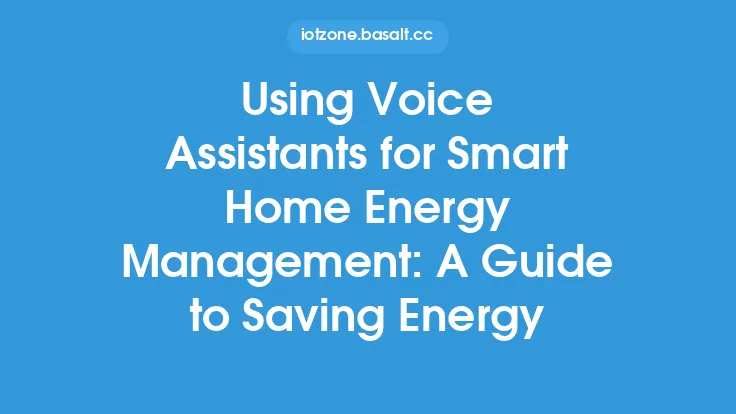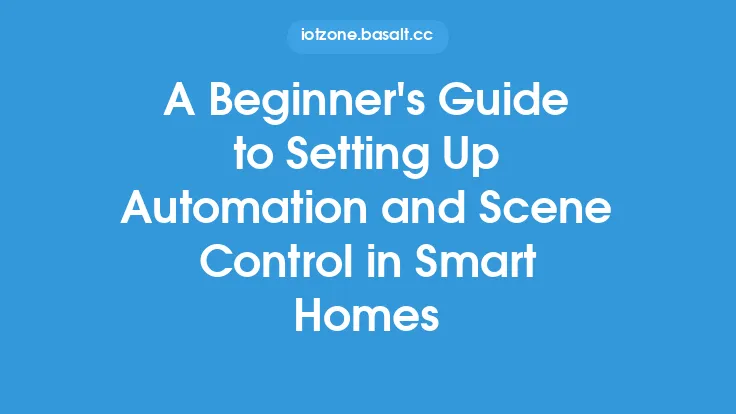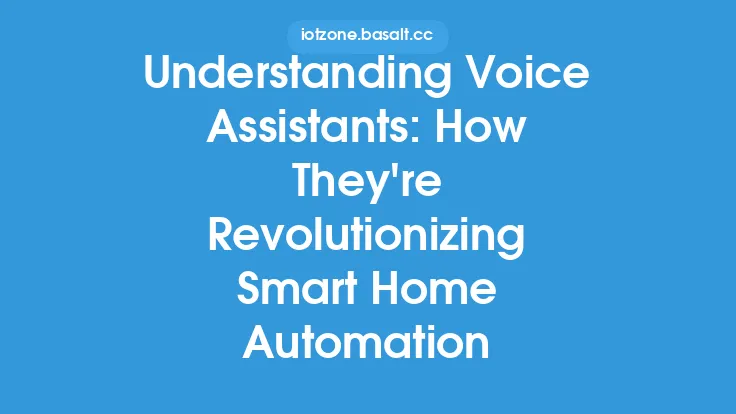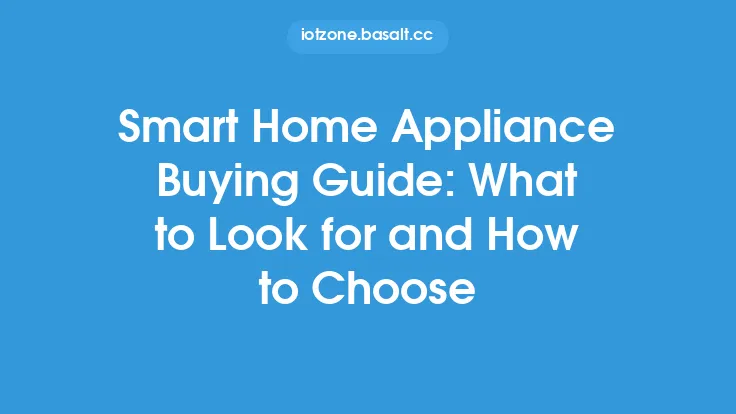Setting up and optimizing voice assistants for smart home automation can be a complex process, but with the right guidance, you can create a seamless and efficient smart home experience. In this article, we will walk you through a step-by-step guide on how to set up and optimize voice assistants for smart home automation, covering the essential aspects of voice assistant setup, device integration, and optimization techniques.
Introduction to Voice Assistants and Smart Home Automation
Voice assistants have revolutionized the way we interact with our smart homes, providing a convenient and hands-free way to control various devices and appliances. To set up a voice assistant for smart home automation, you need to choose a compatible voice assistant platform, such as Amazon Alexa, Google Assistant, or Apple Siri. Each platform has its own set of features, capabilities, and compatible devices, so it's essential to research and choose the one that best fits your needs.
Setting Up Your Voice Assistant
To set up your voice assistant, you'll need to follow these steps:
- Choose a voice assistant device, such as an Amazon Echo or Google Home speaker, or use a smartphone app.
- Download and install the voice assistant app on your device.
- Create an account or sign in to an existing one.
- Follow the in-app instructions to set up your voice assistant, which may include connecting to your Wi-Fi network, setting up voice recognition, and configuring device settings.
- Once set up, you can start using your voice assistant to control your smart home devices.
Integrating Smart Devices with Your Voice Assistant
To integrate smart devices with your voice assistant, you'll need to follow these steps:
- Check the compatibility of your smart devices with your voice assistant platform.
- Download and install the smart device app on your device.
- Follow the in-app instructions to connect your smart device to your voice assistant.
- Configure the device settings, such as naming devices, setting up device groups, and assigning voice commands.
- Test your devices to ensure they are working correctly with your voice assistant.
Optimizing Your Voice Assistant for Smart Home Automation
To optimize your voice assistant for smart home automation, you'll need to follow these steps:
- Use voice commands to control your devices, rather than using the app or physical controls.
- Set up routines and scenes to automate multiple devices with a single voice command.
- Use device groups to control multiple devices at once.
- Configure voice recognition settings to improve accuracy and reduce false triggers.
- Regularly update your voice assistant software and smart device firmware to ensure you have the latest features and security patches.
Advanced Optimization Techniques
For more advanced users, there are several techniques to further optimize your voice assistant for smart home automation:
- Use IFTTT (If This Then That) recipes to create custom voice commands and automate complex tasks.
- Integrate your voice assistant with other smart home systems, such as home security or energy management systems.
- Use voice assistant APIs to create custom voice commands and integrate with other devices and services.
- Configure voice assistant settings to optimize performance, such as adjusting microphone sensitivity or disabling unnecessary features.
- Use third-party voice assistant skills or actions to extend the capabilities of your voice assistant.
Troubleshooting Common Issues
When setting up and optimizing your voice assistant for smart home automation, you may encounter some common issues, such as:
- Device connectivity issues: Check your Wi-Fi network, device settings, and voice assistant configuration to ensure devices are connected correctly.
- Voice recognition issues: Adjust microphone sensitivity, retrain voice recognition, or use a different voice command to improve accuracy.
- Device compatibility issues: Check the compatibility of your smart devices with your voice assistant platform and update device firmware or software as needed.
- Routine or scene issues: Check the configuration of your routines and scenes, and ensure that devices are properly grouped and named.
Conclusion
Setting up and optimizing voice assistants for smart home automation requires some technical knowledge and patience, but with the right guidance, you can create a seamless and efficient smart home experience. By following the steps outlined in this article, you can set up your voice assistant, integrate smart devices, and optimize performance to create a convenient and hands-free smart home experience. Remember to regularly update your voice assistant software and smart device firmware to ensure you have the latest features and security patches, and don't hesitate to experiment with advanced optimization techniques to further enhance your smart home experience.





